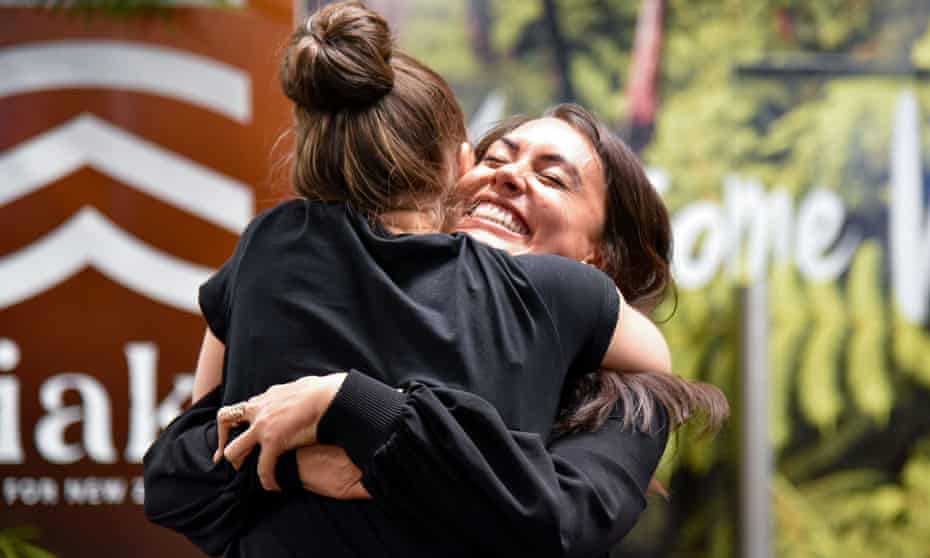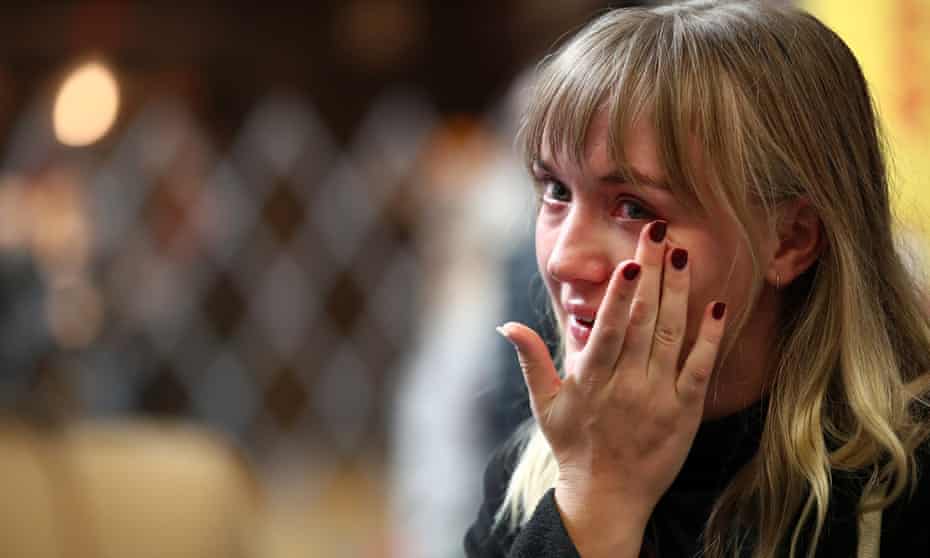Lisa Tetai warned her son not to take a sick day when he picked her up from Auckland airport. “I thought there might be media there,” she explains.
She wasn’t wrong.
As she stepped into the arrivals hall on Monday afternoon, Tetai, like hundreds of others who travelled to New Zealand on the first day of what has been dubbed the trans-Tasman travel “bubble” with Australia, was swamped; a flash of cameras, journalists buzzing with anticipation, then, pushing through the crowd, the people she had actually come to see. Cue tears.
“I was supposed to be here for a funeral. My uncle was admitted to hospital and I booked the earliest ticket I could get. He didn’t make it. They had the funeral last week, but I wanted to see my son and my grandson,” she said.
“I’ve got family all over the North Island and before the pandemic I came back four or five times a year. It has been really, really hard.”

It happened over and over again. Steph Wood was already crying when she walked into the cacophony. So too was her mother, Narelle. Wood had hoped to be back for Christmas last year, but an outbreak in her home city of Sydney delayed the beginning of the long-mooted quarantine exemption for Australian arrivals.
When it was finally announced two weeks ago, she didn’t waste time.
“It was just like, I need to be here as soon as I possibly can,” she said. “I haven’t been back since 2019, I have been counting down the days.”
Narelle was mostly speechless: “It’s just too good to have her back.”
So it went all afternoon. A never-ending stream of emotional airport scenes, like someone had organised a mass re-enactment of Love Actually’s opening montage. It was hard not to be moved. Not only by the reunions but also by the deeplink these two island nations share.
Sign up to receive the top stories from Guardian Australia every morning
Sign up to receive the top stories from Guardian Australia every morning
Lilli Staff hadn’t slept the night before the flight, and in the departures lounge at Sydney airport explained she hadn’t realised hers was the first “quarantine-less” plane to leave Australia for New Zealand since the pandemic forced closed the border between these two countries more than a year ago.
She just wanted to see her friends. In Auckland, she and best friend Lilly Sixsmith shook as they embraced.
“As soon as I saw Auckland from the plane I started crying,” she said. “I’m a mess.”
‘A risk worth taking’
Both Auckland airport and the airlines supplying the flights had put a lot of work into manufacturing this media moment – an acoustic band played the same Dave Dobbyn song on repeat all afternoon (Welcome home / I bid you welcome / I bid you welcome) and Jetstar served champagne in the departures lounge – possibly a budget airline world first – before the first flight to leave Sydney.
And for good reason. Monday might have been a day for reunions, but there is a lot riding on the bubble. The pandemic has decimated both airlines and the tourism industry. According to Tourism Australia, 8,000 international visitors came in January – a 99% decrease from the year before.

For both countries, pulling visitors from across the ditch is a crucial lifeline, particularly as lagging vaccine rollouts have forced politicians to warn other international travel may be some time off.
The questions is whether, after the initial flurry of reunions, the bubble will offer a genuine economic boon for devastated tourism industries.
Pre-Covid, Australians made up about 40% of the international visitors to New Zealand and spent $2.7bn in 2019. Kiwis spent almost the same amount – $2.6bn in 2019, although Australia’s larger tourism market meant New Zealanders only made up about 15% of visitors there.
But tourism officials are clear-eyed about the disincentives. The New Zealand prime minister, Jacinda Ardern, warned when the bubble was announced that the high probability of fresh Covid-19 outbreaks meant the travel bubble could be burst at any moment.
New arrivals on Monday were warned they could be forced into quarantine in the event of an outbreak.
That level of uncertainty could mean that many holiday-makers will delay trips while they wait to see how it unfolds. Tourism NZ acknowledges this, saying its scenario modelling showed it could take until January 2022 for Australia to reach 80% recovery to pre-Covid 19 levels.
And while Jetstar’s early flights on Monday were busy, demand was lower later in the day.
There were encouraging signs, however. Emmanuel Samaras, 16, explained he and his parents were heading to New Zealand “because my parents want a holiday”. His mother, Stella, picked the first flight “because we really wanted to get out”.
“We’ve been talking about doing it since they’ve been talking about a bubble and we just thought why not,” Stella said.
“It is a risk, but we thought it was worth taking it.”
This content first appear on the guardian
